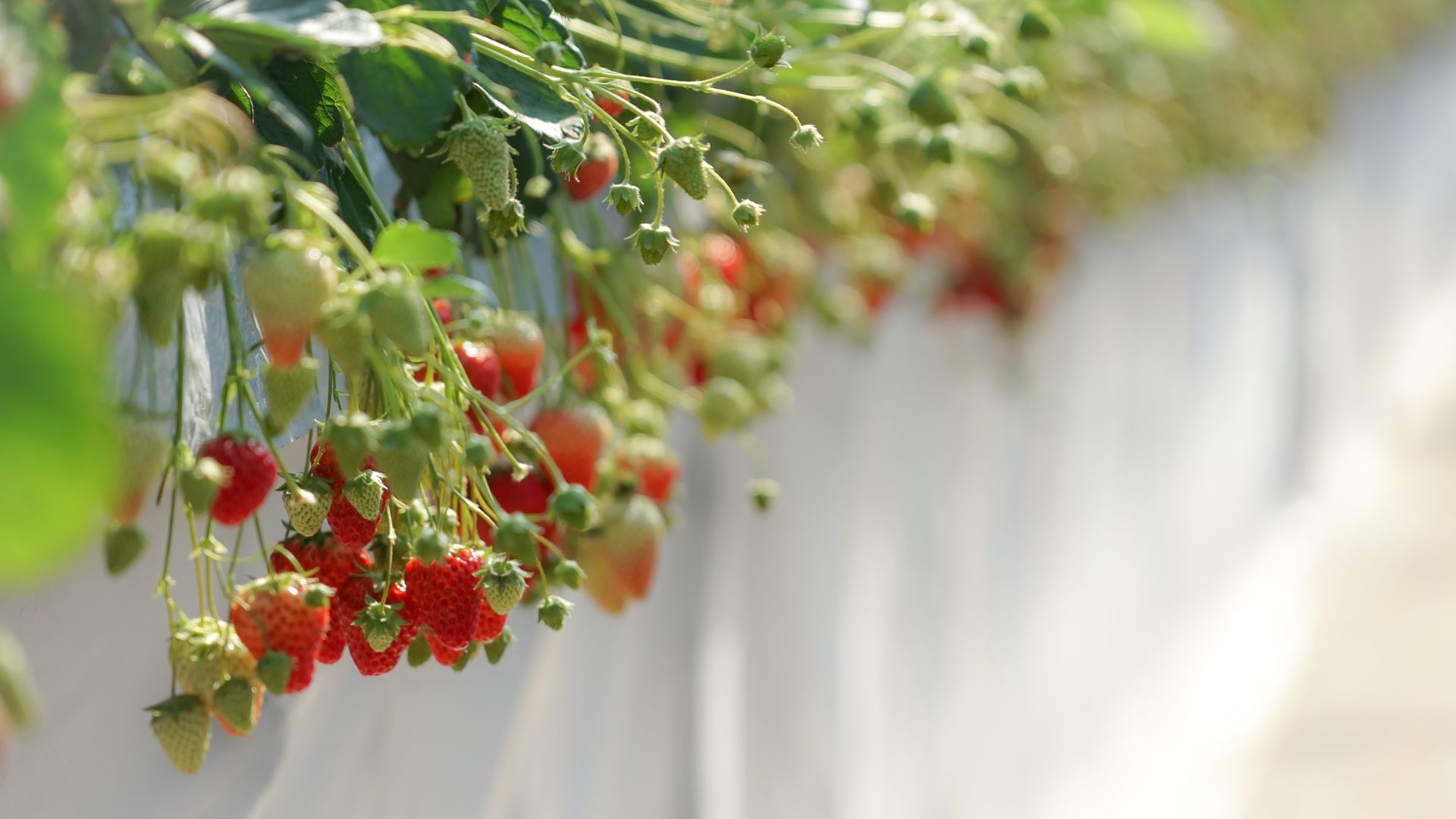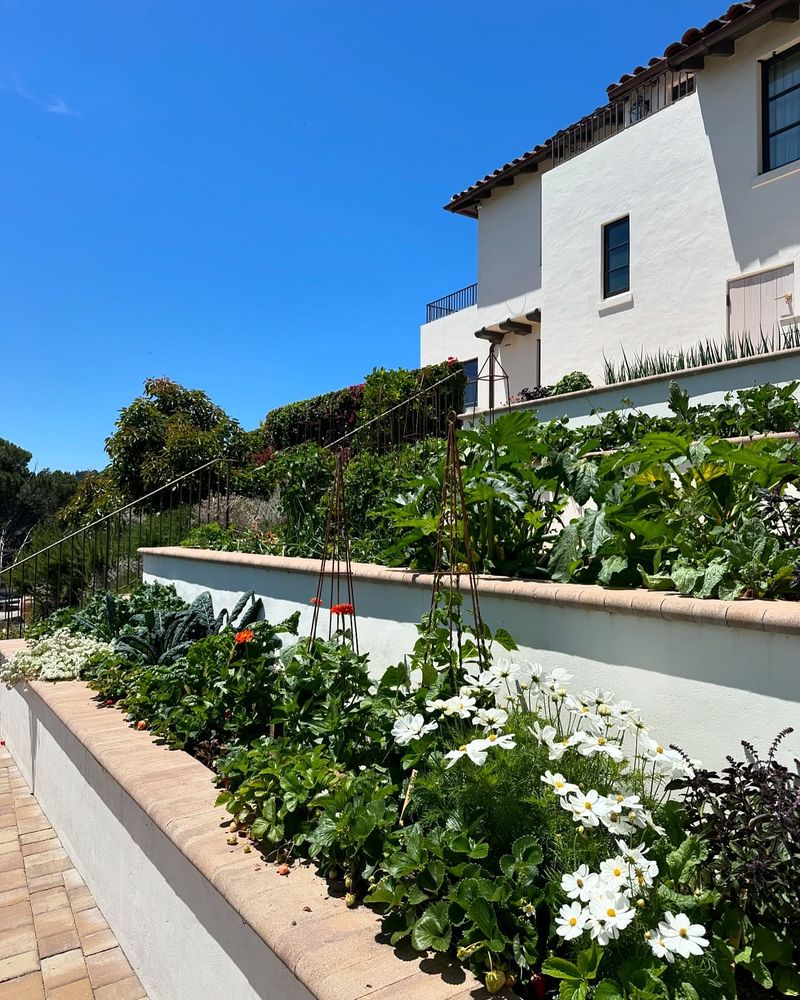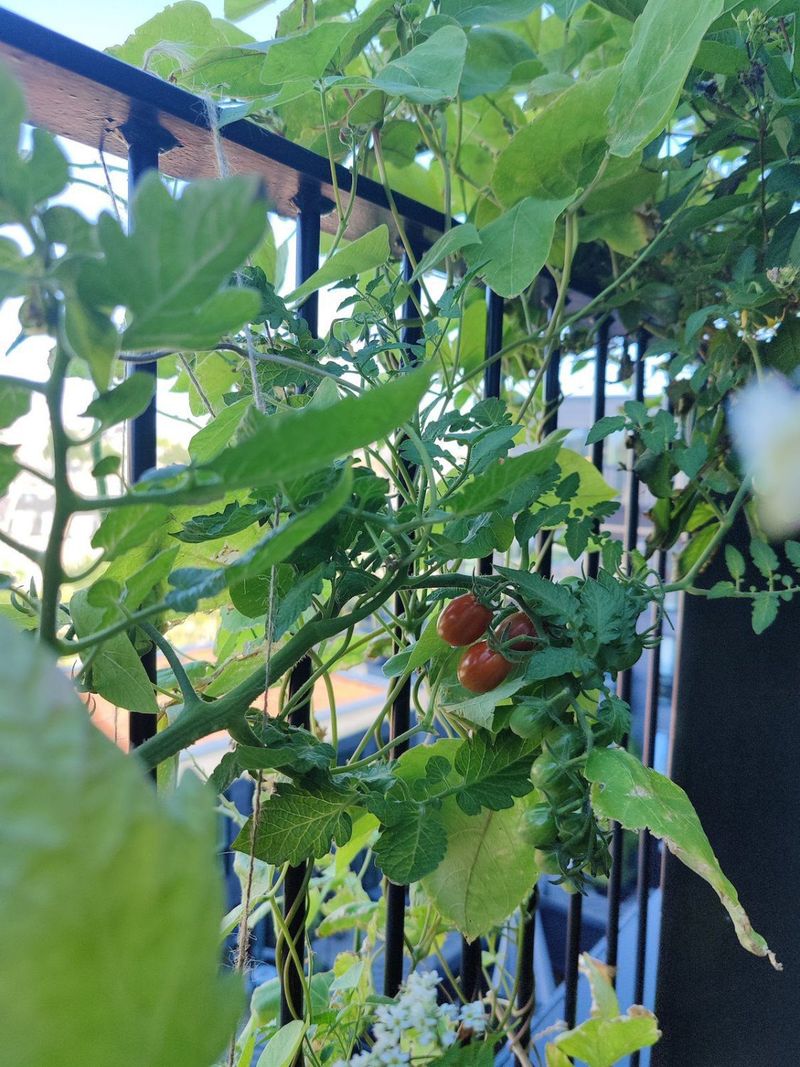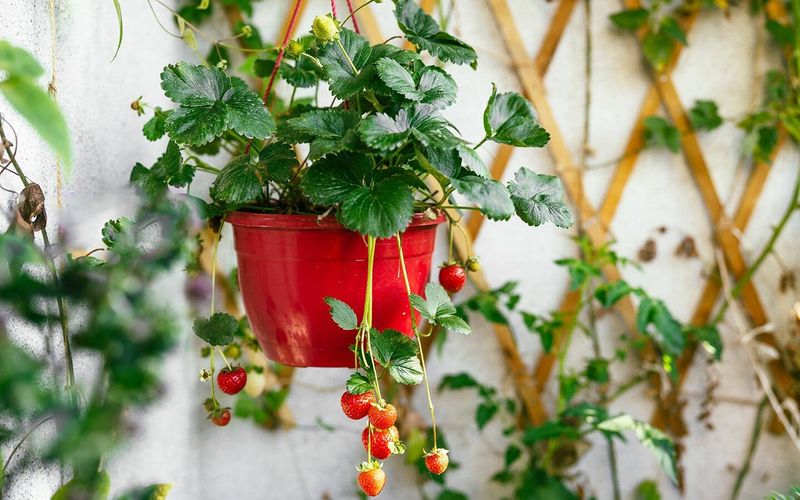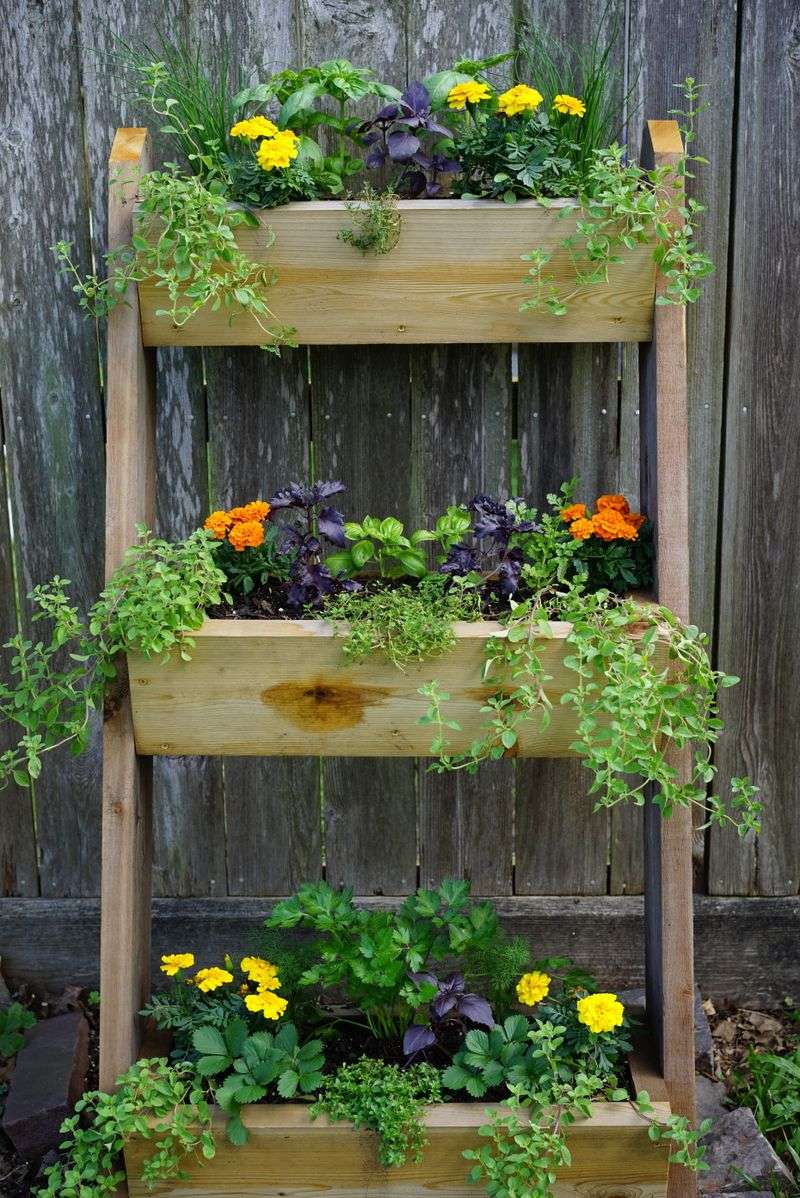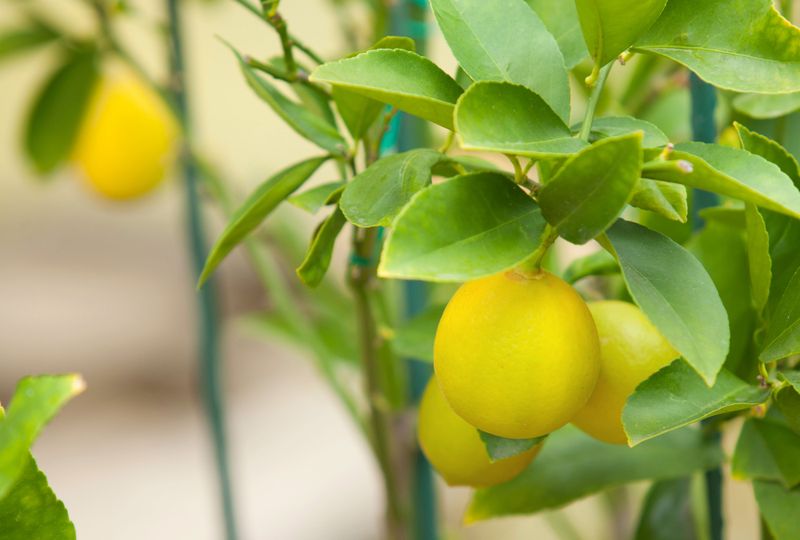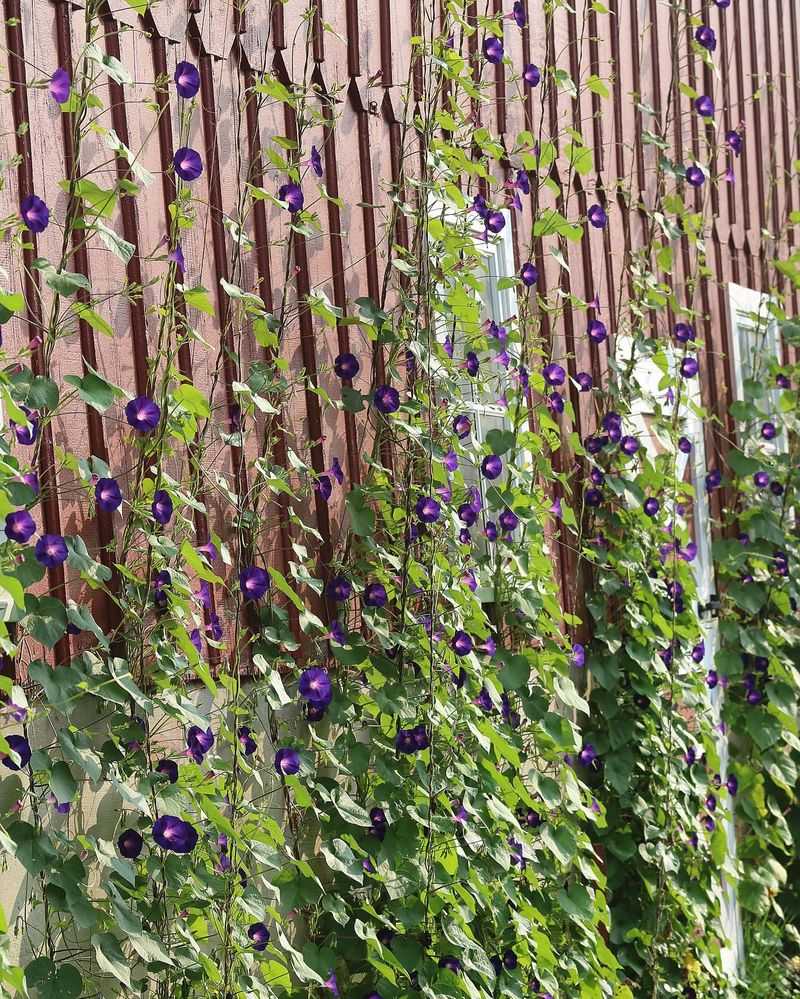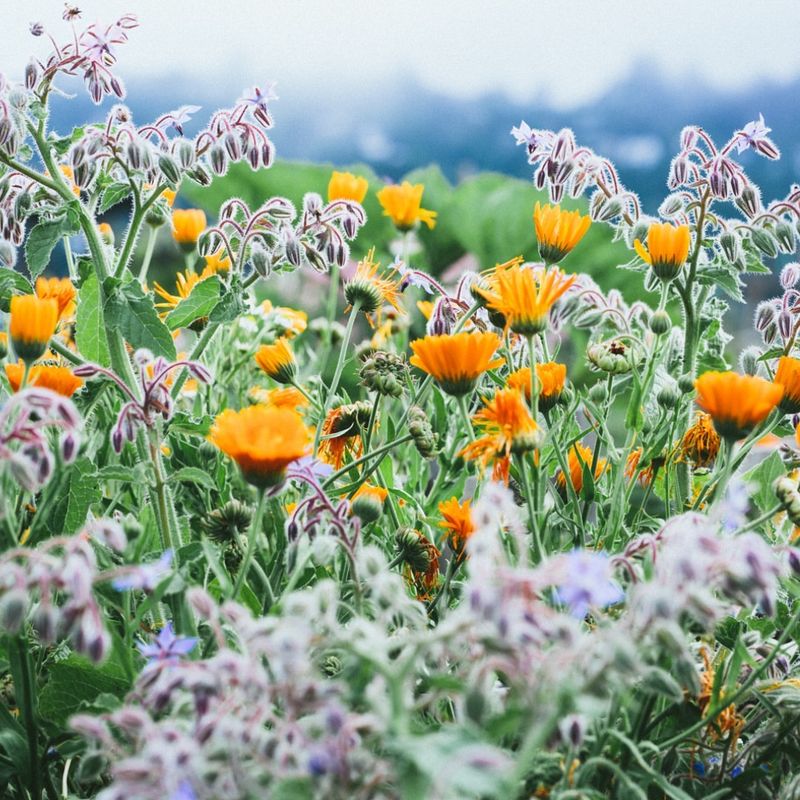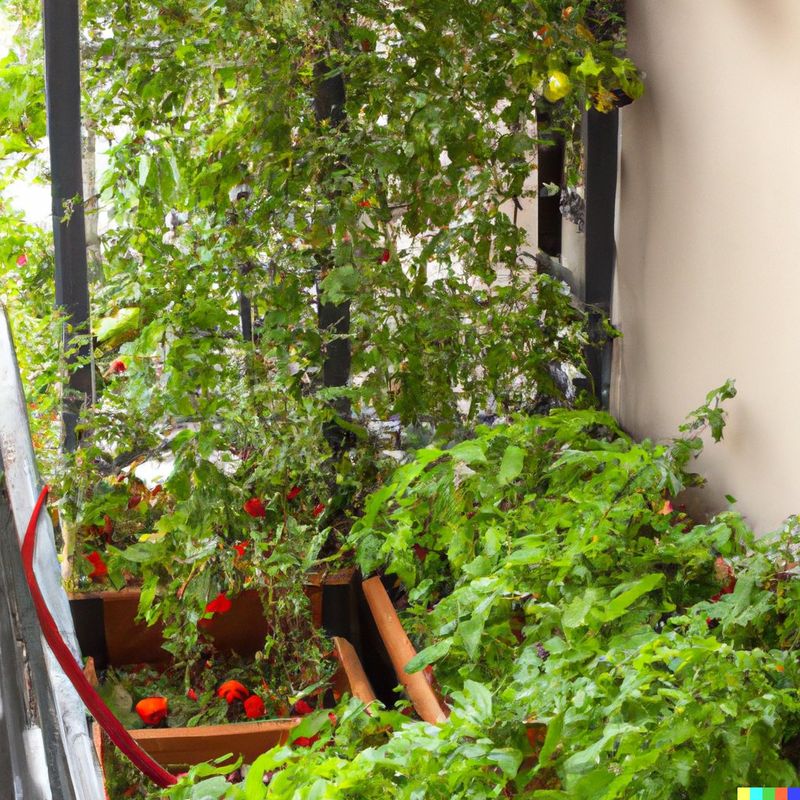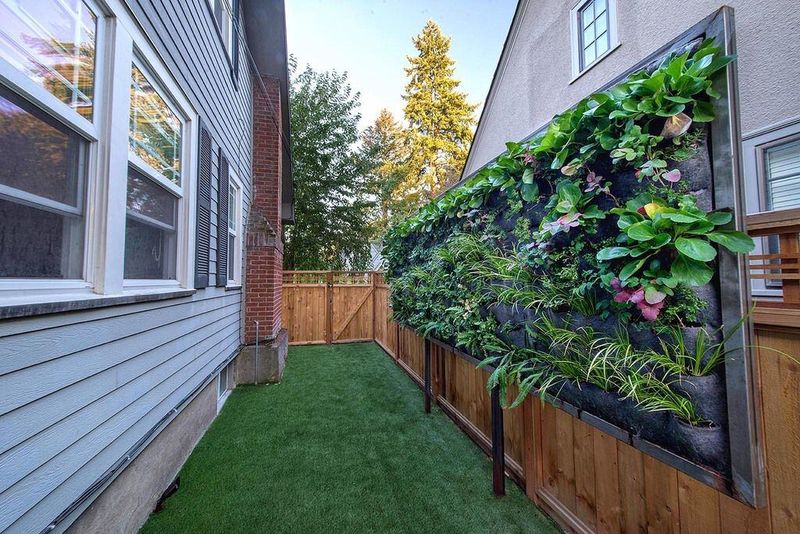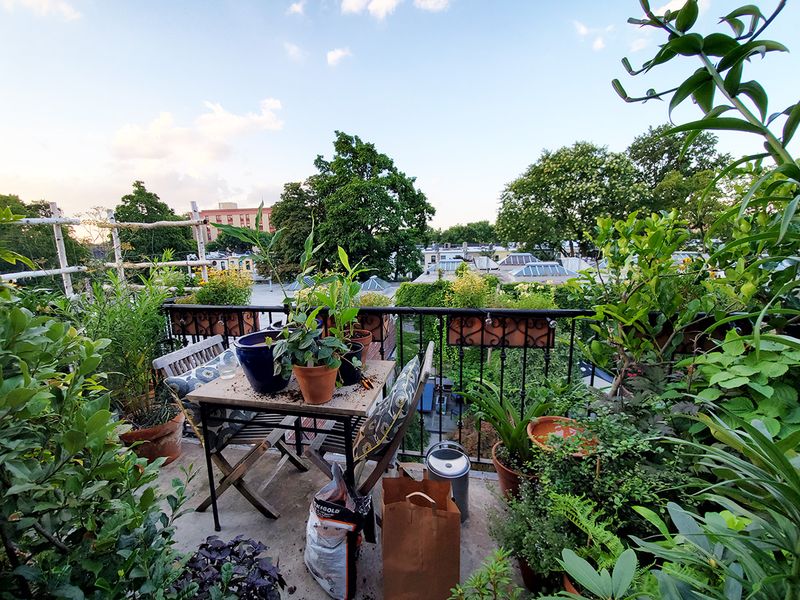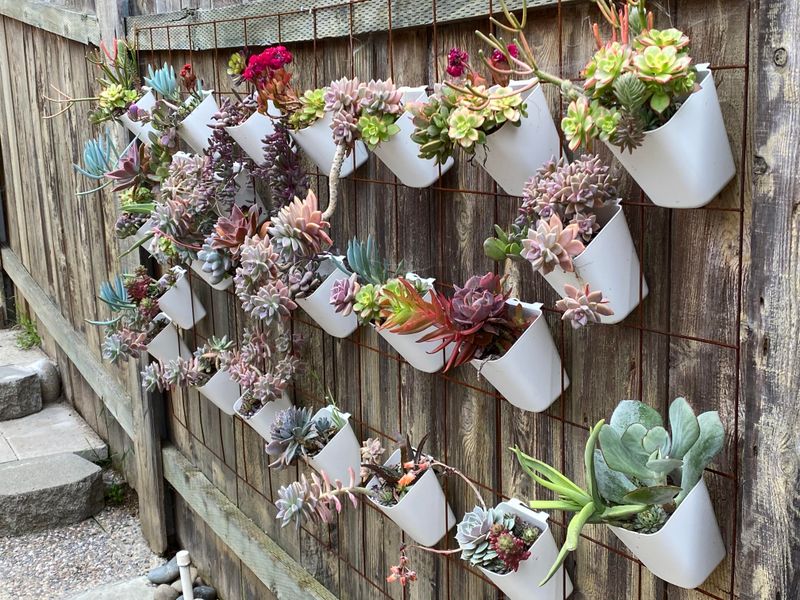San Francisco terraces may be small, but they’re full of potential for creative gardening. The city’s mild climate makes it easy to mix California natives with edible plants in vertical setups. With smart layering, you can grow food, boost biodiversity, and add visual charm—all in one space.
On my own narrow terrace, I’ve found that native plants attract helpful insects that keep my veggies healthy without chemicals. The city’s foggy microclimates can be tricky, but once you understand them, native and edible plants thrive side by side.
Thoughtful vertical designs turn compact terraces into vibrant mini-ecosystems. They reflect San Francisco’s natural beauty while offering fresh ingredients just steps from your kitchen. It’s a perfect solution for apartment dwellers and anyone with limited outdoor space.
1. Mixing Native Herbs With Climbing Greens
California sagebrush and hummingbird sage create perfect base layers beneath climbing peas and beans. The aromatic natives deter certain pests while providing habitat for beneficial insects.
I’ve found that pole beans growing up simple bamboo teepees provide shade for heat-sensitive native herbs during intense afternoon sun. This partnership works especially well in west-facing San Francisco terraces.
The vertical dimension maximizes growing space while creating visual interest with different textures and heights that change throughout seasons.
2. Training Tomatoes Along Balcony Rails
String trellises attached to balcony railings transform otherwise unused vertical space into productive growing areas. San Francisco’s sunny southern exposures provide ideal conditions for indeterminate tomato varieties that can climb 6+ feet.
Underneath, plant native strawberries as ground cover to prevent moisture loss and add another edible layer. The strawberries’ shallow roots don’t compete with deeper-rooted tomatoes.
This arrangement creates a living privacy screen that changes with the seasons while providing months of harvests.
3. Using Hanging Baskets For Strawberries
Suspended baskets at varying heights create eye-catching vertical interest while keeping berries safely above snail territory. The microclimate of San Francisco’s foggy mornings provides natural irrigation for these hanging gardens.
Woodland strawberries, a California native, produce smaller but intensely flavored berries perfect for morning harvests. Plant them alongside trailing nasturtiums whose edible flowers and leaves add peppery notes to summer salads.
Position the baskets to cascade down walls or from overhead structures, making use of otherwise empty space.
4. Combining Drought-Tolerant Plants With Salad Mixes
Low-water natives like ceanothus and manzanita serve as permanent structural elements in terrace containers. Their deep root systems access water that shallow-rooted lettuce varieties can’t reach, creating compatible companions.
Between these woody natives, quick-growing mesclun mixes provide regular harvests throughout San Francisco’s mild winters. The native shrubs also offer wind protection for delicate salad greens.
This combination respects California’s water constraints while still producing fresh food, making it particularly suitable for drought-conscious San Francisco gardeners.
5. Integrating Edible Flowers Into Vertical Frames
Wall-mounted picture frames filled with soil and planted with California poppy, borage, and Johnny-jump-ups create living art that’s both beautiful and edible. The frames can be arranged in patterns that complement your terrace’s aesthetic.
Harvest these blooms for colorful garnishes that brighten up dishes with their distinct flavors. Borage tastes like cucumber, while pansies offer a mild wintergreen note.
San Francisco’s cool summers prevent these flowers from bolting too quickly, extending both their ornamental and culinary value throughout the growing season.
6. Adding Small Citrus Trees In Corner Planters
Meyer lemons and kumquats in large corner containers anchor terrace designs while providing year-round structure. Their compact size makes them perfect for San Francisco’s limited outdoor spaces.
Plant native beach strawberries around the base to serve as living mulch that retains moisture and suppresses weeds. The strawberries’ horizontal growth habit complements the trees’ vertical form.
Both plants benefit from similar watering schedules, making maintenance simpler. Plus, you’ll enjoy fresh citrus and berries from the same footprint—a space-efficient approach to urban fruit production.
7. Using Trellises For Pole Beans And Morning Glory
Scarlet runner beans produce edible pods while their red flowers attract hummingbirds and beneficial insects to your San Francisco terrace. Interplanting with native morning glory creates a stunning vertical tapestry of blooms that changes throughout the day.
The morning glory opens with dawn’s first light, while the bean flowers persist throughout the afternoon. Both vines readily climb string trellises attached to walls or railings.
This combination provides food, beauty, and habitat in a single vertical plane—perfect for terraces where floor space is at a premium.
8. Growing Native Pollinator Plants Beside Edibles
Yarrow and buckwheat attract tiny parasitic wasps that control aphids naturally on adjacent vegetable plants. This beneficial relationship eliminates the need for pesticides in your San Francisco terrace garden.
Arrange these native flowering plants in taller containers behind shorter pots of lettuces and radishes. The height difference creates visual layers while ensuring all plants receive adequate sunlight.
San Francisco’s year-round growing conditions support continuous blooms that maintain pollinator populations, resulting in better yields from your edible plants through improved pollination.
9. Creating Multi-Level Planters For Herbs And Berries
Stair-step planter systems maximize vertical space while creating distinct microclimates. San Francisco’s afternoon fog rolls in at different heights, affecting each level differently.
Place sun-loving rosemary and thyme on upper levels where they receive maximum light. Lower levels, which stay cooler and moister, provide ideal conditions for mint and native blackberries.
The terraced arrangement not only looks architecturally interesting but also makes harvesting easier—no bending required for upper levels, perfect for small-space gardeners with back concerns.
10. Turning Fence Lines Into Edible Walls
Repurposed rain gutters mounted horizontally along fence perimeters create instant growing channels for shallow-rooted crops. Strawberries, lettuce, and radishes thrive in these narrow spaces while maximizing your San Francisco terrace boundaries.
Stagger the gutters at different heights to ensure proper drainage and create visual interest. The lowest gutters can catch water from those above, reducing overall water usage.
This approach transforms boring boundaries into productive growing space, essentially creating walls of food that don’t take up valuable floor area.
11. Blending Medicinal Natives With Culinary Staples
Yerba buena, California’s native mint, grows beautifully alongside culinary herbs like basil and cilantro. Its trailing habit works perfectly in hanging baskets or as spillers in container arrangements.
The medicinal properties of yerba buena—traditionally used for digestion and headaches—complement the culinary uses of your kitchen herbs. All thrive in San Francisco’s moderate climate with similar water needs.
Group these plants near kitchen doors for easy access when cooking or preparing tea. Their combined fragrances create a sensory experience that enhances your terrace enjoyment.
12. Vertical Succulent Gardens With Edible Accents
Frame-mounted succulent gardens featuring Dudleya and other native California varieties create striking living walls requiring minimal water. Between these drought-tolerant natives, tuck in edible succulents like purslane and miner’s lettuce.
Both plant types share similar growing requirements, making maintenance straightforward. The contrasting textures and forms create visual interest year-round on San Francisco terraces.
Harvest the edible varieties regularly to maintain the design’s appearance while adding nutritious greens to your meals. This approach beautifully balances aesthetics with functionality.

